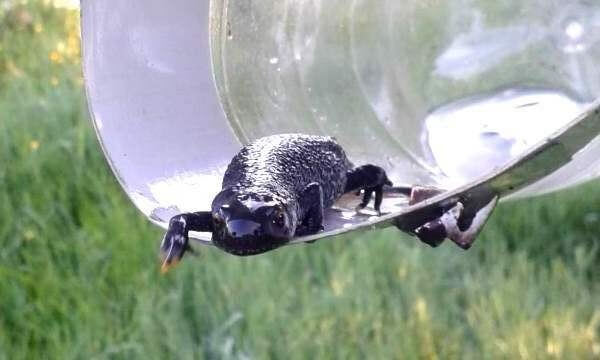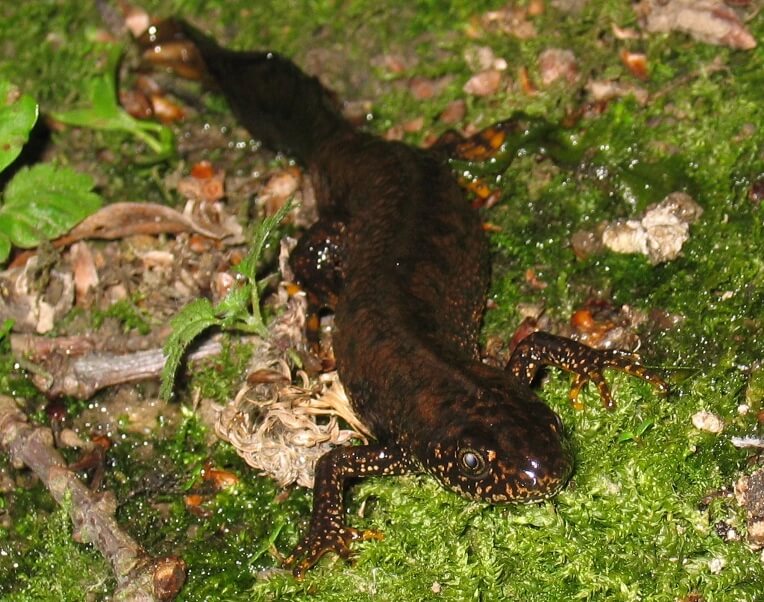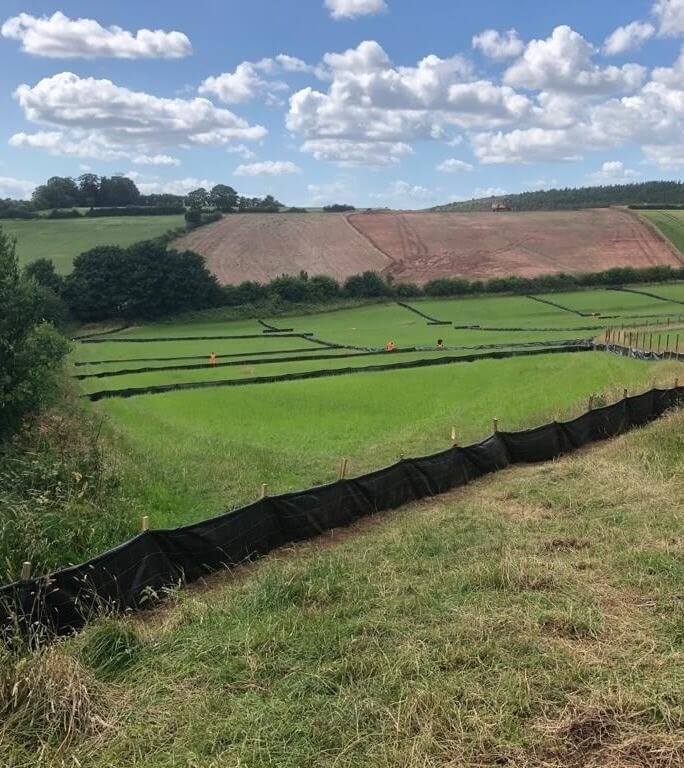

Great crested newt surveys are undertaken between mid-March and mid-June (although eDNA surveys can be reliably carried out up to the end of June), and must be undertaken by licenced great crested newt surveyors.
Morph Ecological Consultants’ team of licenced great crested newt surveyors have undertaken great crested newt surveys across Nottinghamshire, Leicestershire and Derbyshire. Working with our network of local surveyors we can offer cost-effective great crested newt surveys throughout England.
Great crested newts and their habitat are afforded full protection under UK and European legislation, including the Wildlife and Countryside Act 1981 (as amended) and The Conservation of Habitats and Species Regulations 2017 (as amended). Together, this legislation makes it illegal to:
If a development activity is likely to result in disturbance or killing of a great crested newt, damage to its habitat etc, then a licence will usually be required from Natural England. If the development site is located within 500m from ponds, great crested newts will need to be a consideration and an ecologist should be contacted for further advice.
The standard approach for amphibian surveys to determine the presence or presumed absence of great crested newts involves surveying a pond or waterbody during the spring months (mid-March to mid-June). In order to show presumed absence of great crested newts within a pond, four survey visits need to be undertaken during the spring (with two of these visits needing to be undertaken during the peak activity period for great crested newts, which is mid-April to mid-May).
Where great crested newts are recorded, a further two survey visits (making a total of six amphibian survey visits) are required to determine a population estimate.


Bottle trapping (funnel traps), night-time torch surveys, netting and egg searches are the four standard survey methods for great crested newt surveys. Three of these survey methods need to be undertaken during each survey visit.
A typical great crested newt survey visit would involve the deployment of bottle traps in the evening, followed by a night-time torch survey. Surveyors would then return to the pond in the early morning to retrieve the bottle traps (and release any amphibians caught). Egg searches are undertaken during both the evening and morning visits. Netting surveys are best carried out during the morning visit as netting disturbs the pond sediment, which can impact on the visibility during torch-light surveys.
Great crested newt surveys should only be undertaken by licenced ecologists. Morph Ecological Consultants’ ecologists are licenced to carry out great crested newt surveys throughout England.
Environmental DNA (eDNA) surveys can be used to detect great crested newts through a process of taking samples of pond water, and then having the samples tested at a laboratory. Great crested newts shed DNA into the water, and the laboratory tests for the presence of this DNA. This method can be used to determine presence or absence of great crested newts, however cannot be used to determine a population size estimate. When great crested newts are confirmed via an eDNA survey, a full amphibian survey (as detailed previously) is required to establish the population size. The use of eDNA surveys can sometimes save time and reduce costs by scoping out ponds without great crested newts.
eDNA surveys are carried out by licenced ecologists and follow the protocol set out by Natural England. Pond samples can be collected from the 15th April until the 30th of June.
Recent research has found that great crested newt eDNA can be still be recorded much later into the year than the 30th June. As such there may be occasions where an eDNA survey in the late summer may yield a positive result for great crested newt eDNA, thereby allowing an assessment of a proposed development's potential impact on amphibians in advance of full surveys the following spring. Each site is different, and this approach may not always be suitable, however when it can be used, extends the period when great crested newts can be identified.


If the proposed works are going to impact on great crested newt habitat, works can only proceed under a licence from Natural England.
Following from the amphibian surveys, a licence application needs to be sent to Natural England. Natural England require at least 30 working days to assess the application. Working methods need to be designed to ensure there are no impacts to great crested newts. A standard approach includes installing amphibian fencing and trapping out the area. Temporary Amphibian Fencing (TAF) is installed around the area where newts may be present. Buckets are installed into the ground to allow newts to fall into. Each morning, an ecologist will translocate any newts found in the buckets to a receptor area nearby. Depending on the population size of great crested newts present in the area, the trapping period can range between 30-90 days, and trapping can only take place during suitable weather conditions, typically between mid-March and the end of October.
Compensation habitats may also be required to replace those habitats lost. This may involve the construction of new ponds, or the construction of terrestrial habitats such as grassland, hedgerows, woodland or hibernacula. Mitigation such as permanent newt fencing, tunnels, wildlife kerbs may also be required depending on the site proposals. Compensation is unique to each project and can be developed to blend within the scheme designs.
A new licencing scheme has recently been introduced and is being rolled out across different counties. The premise of this licencing route, moves mitigation away from individual development sites and protecting individual newts, but instead to contributing towards pre-set compensatory habitats for newts away from the development.
For the DLL route, it is not always essential to have up-to-date survey data for ponds in the vicinity of a development site. An initial enquiry needs to be sent to Natural England. Natural England assess the impacts of the proposed development and will send an Impact Assessment and a Conservation Payment Certificate. This explains the terms and conditions of the scheme as well as how much the conservation payment would be. At this stage the terms and conditions can be accepted to join the District Level Licencing Scheme. Once planning permission is obtained, the application form to apply for a great crested newt district level licence can be applied for, which should contain a reasoned statement to demonstrate that there is no satisfactory alternative to the planned activity. A licence can only be granted, and thus works can only proceed when:
A licence is valid for 2 years and a report of action must be submitted within 14 days of the licence expiry date.